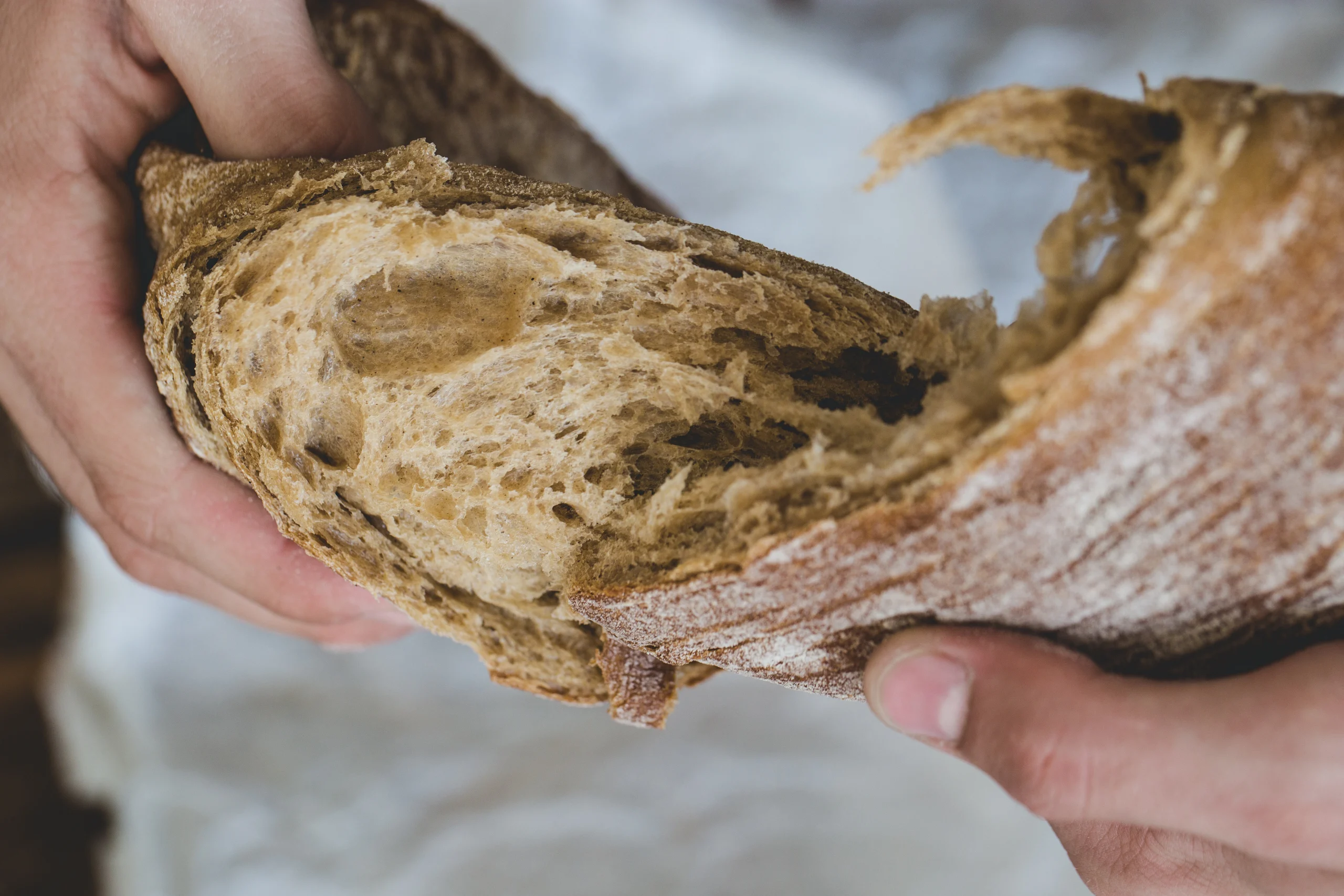Reduce waste and make the most of your kitchen scraps with these discard recipes. From sourdough starter discard to vegetable peels, these recipes turn what’s often thrown away into delicious dishes. Perfect for eco-conscious cooks, these ideas save money, minimize waste, and unlock surprising flavors from your leftovers.
Why These Discard Recipes Are a Must-Try
Whether it’s the sourdough discard you don’t want to waste or veggie scraps left from prepping dinner, discard recipes transform overlooked ingredients into something extraordinary. These recipes are not only environmentally friendly but also creative and satisfying, offering a fresh perspective on sustainable cooking.
For more inspiration, visit our Baking Category. Pair these recipes with our Sourdough Bagel Recipe for a perfect combination of flavor and ingenuity.
Ingredients for Discard Recipes
Sourdough Discard Pancakes
- 1 cup sourdough discard
- 1 cup all-purpose flour
- 1 cup milk
- 1 egg
- 1 tbsp sugar
- 1 tsp baking soda
- ½ tsp salt
Vegetable Scrap Broth
- 2 cups vegetable scraps (onion peels, carrot tops, celery leaves, etc.)
- 8 cups water
- 1 tsp salt
- 1 bay leaf
- 1 clove garlic
Banana Peel Smoothie
- 1 ripe banana, including the peel (washed thoroughly)
- 1 cup almond milk (or any milk of choice)
- 1 tbsp honey or maple syrup
- ½ tsp cinnamon
- Ice cubes
Step-by-Step Guide to Making Discard Recipes
Sourdough Discard Pancakes
- In a large bowl, whisk together sourdough discard, flour, milk, egg, sugar, baking soda, and salt until smooth.
- Heat a nonstick skillet over medium heat and lightly grease with butter or oil.
- Pour ¼ cup of batter onto the skillet and cook until bubbles form on the surface. Flip and cook the other side until golden brown.
- Serve warm with syrup, fruit, or your favorite toppings.
Vegetable Scrap Broth
- Add vegetable scraps, water, salt, bay leaf, and garlic to a large pot.
- Bring to a boil, then reduce the heat and simmer for 1-2 hours.
- Strain the broth through a fine mesh sieve, discarding the solids.
- Use immediately or store in the refrigerator for up to 5 days.
Banana Peel Smoothie
- Cut the banana (peel included) into smaller pieces for easier blending.
- Combine banana, almond milk, honey, cinnamon, and ice cubes in a blender.
- Blend until smooth and creamy.
- Serve immediately for a refreshing and nutrient-packed drink.
For another eco-friendly dish, check out our Chow Chow Recipe made from green tomatoes or garden leftovers.
Customizing Your Discard Recipes
- Add Flavor to Broth: Include herbs like parsley, thyme, or rosemary for an aromatic touch.
- Sweeten Your Smoothie: Add dates, berries, or nut butter for extra richness.
- Experiment with Discards: Try adding sourdough discard to muffins, waffles, or cookies for a tangy twist.
For more inventive ideas, explore our Snacks Category.
Tips for Perfect Discard Recipes
- Store Scraps Properly: Freeze vegetable scraps until you have enough to make broth.
- Use Fresh Ingredients: Ensure peels and discards are clean and free of mold or spoilage.
- Balance Flavors: Add sweeteners or seasonings to enhance the taste of your discard-based recipes.
- Get Creative: Don’t limit yourself to traditional recipes—explore new ways to incorporate scraps.
Pair these dishes with our Homemade Bread Recipe for a zero-waste meal.
Serving Suggestions for Discard Recipes
- Enjoy sourdough pancakes with fresh fruit and a drizzle of honey for breakfast.
- Use vegetable broth as a base for soups, stews, or risottos.
- Serve banana peel smoothies with granola for a quick, nutritious snack.
For dessert, try our Matcha Muffin Recipe with Almond Flour for a creative ending to your meal.
Nutrition Facts for Discard Recipes
Per serving (depending on the specific discard recipe, approximately 4 servings):
- Calories: 150–250
- Protein: 3–8g
- Carbohydrates: 20–40g
- Sugars: 5–12g
- Dietary Fiber: 2–5g
- Total Fat: 5–10g
- Saturated Fat: 1–3g
- Sodium: 200–400mg
Discard recipes allow you to make use of ingredients that might otherwise go to waste, like sourdough starter discard, vegetable scraps, or whey from yogurt-making. These recipes are not only economical but also help reduce food waste while creating flavorful and satisfying dishes.
Regional Variations of Discard Recipes
Each region brings unique flavors and ingredients to discard recipes, turning leftovers into culinary delights:
Sourdough Pancakes (American)
- Key Ingredients: Sourdough starter discard, eggs, milk, and flour.
- Flavor Profile: Slightly tangy, fluffy, and light.
- Pairing: Serve with maple syrup and fresh fruit for breakfast.
Vegetable Stock (Global)
- Key Ingredients: Vegetable peels, onion skins, carrot tops, and herbs.
- Flavor Profile: Savory, aromatic, and rich.
- Pairing: Use as a base for soups, stews, or risottos.
Paneer Whey Soup (Indian)
- Key Ingredients: Whey, turmeric, ginger, and cumin.
- Flavor Profile: Warm, spiced, and earthy.
- Pairing: Enjoy with naan bread or steamed rice.
Leftover Rice Fritters (Asian-Inspired)
- Key Ingredients: Cooked rice, soy sauce, green onions, and sesame oil.
- Flavor Profile: Savory, crispy, and nutty.
- Pairing: Serve with chili sauce or soy-based dips.
Stale Bread Panzanella (Italian)
- Key Ingredients: Stale bread, tomatoes, cucumbers, and olive oil.
- Flavor Profile: Fresh, tangy, and slightly crunchy.
- Pairing: Perfect as a light lunch or side salad.
Fun Cooking Techniques for Kids
Involving kids in creating discard recipes is a fun way to teach sustainability and creativity in cooking:
Mixing Doughs or Batters
- Activity: Let kids stir sourdough discard pancake batter or bread dough.
- Learning Outcome: Teaches them about consistency and ingredient blending.
Making Vegetable Stock
- Activity: Encourage kids to add vegetable scraps to a pot of water and stir.
- Learning Outcome: Introduces them to repurposing ingredients and cooking basics.
Shaping Fritters
- Activity: Allow kids to form leftover rice or bread dough into patties.
- Learning Outcome: Develops motor skills and promotes hands-on creativity.
Garnishing Dishes
- Activity: Let kids sprinkle herbs, cheese, or seeds over finished recipes.
- Learning Outcome: Enhances their sense of presentation and artistic flair.
Naming the Dish
- Activity: Encourage kids to name their creation, like “Eco Pancakes” or “Scrappy Soup.”
- Learning Outcome: Builds pride and excitement in cooking.
Kitchen Tools to Elevate Discard Recipes
- Large Mixing Bowls
- Perfect for combining discard ingredients with ease.
- Fine Mesh Strainer
- Essential for straining vegetable stock or whey-based liquids.
- Cast Iron Skillet
- Ideal for frying fritters, pancakes, or bread-based dishes.
- Blender or Food Processor
- Useful for pureeing soups or creating smooth batters from scraps.
- Silicone Spatula
- Helps scrape every last bit of discard material, minimizing waste.
- Baking Sheets
- Great for roasting bread cubes or making crackers from sourdough discard.
- Mason Jars or Airtight Containers
- Perfect for storing stocks, soups, or batters for later use.
Common Mistakes to Avoid
- Not Properly Storing Discards
- Keep sourdough starter discard or whey in the fridge to prevent spoilage.
- Skipping Seasoning
- Discard recipes can lack flavor without proper seasoning, so don’t shy away from spices and herbs.
- Using Rotten Ingredients
- Only use fresh, clean scraps or discard materials that are still safe to consume.
- Overcrowding the Pan
- Give fritters or pancakes enough space to cook evenly and achieve a crispy texture.
- Discarding Too Soon
- Some discards, like sourdough starter, can last several days if properly stored.
Creative Add-Ins
- Herbs and Spices
- Enhance flavor with rosemary, thyme, paprika, or garlic powder.
- Vegetables
- Add grated zucchini, carrots, or spinach to fritters or pancakes.
- Cheese
- Incorporate shredded Parmesan, cheddar, or feta for added richness.
- Seeds and Nuts
- Sprinkle sesame seeds, chia seeds, or chopped almonds for crunch.
- Sweet Additions
- Use cinnamon, honey, or dried fruits for sweet variations of discard recipes.
How to Double or Scale Discard Recipes
- Batch Preparation
- Double the quantities of ingredients and prepare in larger bowls or pots.
- Freeze Extras
- Make larger batches of vegetable stock or fritters and freeze portions for later use.
- Serve Family-Style
- Present discard recipes like soups or bread in large serving dishes for sharing.
- Customize Options
- Offer different toppings or mix-ins for guests to personalize their servings.
How to Store Discard Recipes
- Refrigeration
- Store finished recipes like pancakes or soup in airtight containers in the fridge for up to 5 days.
- Freezing
- Freeze discard-based doughs, batters, or stocks for up to 3 months in freezer-safe bags or containers.
- Meal Prep
- Divide into single-serving portions for easy grab-and-go meals.
- Refreshing Before Serving
- Reheat or add fresh herbs and spices to revive flavor after storage.
Discard Recipes in Culture
Discard recipes represent resourcefulness in cooking, rooted in traditions that value sustainability and creativity. From French Pain Perdu (stale bread pudding) to Indian whey-based curries, these recipes transform leftovers into cherished dishes.
Today, discard recipes are embraced worldwide, reflecting a growing focus on reducing food waste and making the most of every ingredient.
How to Adapt Discard Recipes for Special Diets
- Gluten-Free
- Use gluten-free flours or bread for sourdough and bread-based recipes.
- Vegan-Friendly
- Replace eggs with flaxseed or chia seed substitutes and avoid dairy-based discards.
- Low-Sodium Option
- Limit salt in stocks and batters, and use low-sodium substitutes where needed.
- Keto-Friendly
- Focus on low-carb discards, like almond meal or cauliflower scraps, for recipes.
- Low-Sugar Option
- Reduce added sugars in sweet discard recipes, opting for natural sweeteners like stevia.
How to Adapt Discard Recipes for Special Occasions
- Elegant Dinners
- Serve discard-based soups or bread with upscale garnishes like truffle oil or microgreens.
- Casual Gatherings
- Offer fritters or pancakes with a variety of dipping sauces and toppings.
- Festive Holidays
- Use seasonal flavors like pumpkin spice or cranberries in sweet discard recipes.
- Kids’ Parties
- Shape pancakes or fritters into fun designs, adding colorful garnishes.
- Fitness Meals
- Pair discard recipes with lean proteins and fresh greens for a post-workout boost.
FAQs About Discard Recipes
Can I freeze sourdough discard?
Yes! Sourdough discard can be stored in an airtight container in the freezer for up to 3 months.
What vegetable scraps work best for broth?
Onion skins, carrot tops, celery leaves, and garlic peels are excellent for making a flavorful broth. Avoid starchy or bitter vegetables like potatoes or kale stems.
Is it safe to eat banana peels?
Yes, as long as they are thoroughly washed. Banana peels are rich in fiber, antioxidants, and nutrients.
How do I store discard-based recipes?
Store sourdough-based items in an airtight container at room temperature for up to 2 days or refrigerate for longer freshness.
Explore More Recipes Like Discard Recipes
If you enjoyed these eco-friendly recipes, try our Peach Cobbler Recipe with Cake Mix for a creative twist or explore our Baking Category for more ideas.
With these Discard Recipes, you’ll turn scraps into treasures while reducing waste and embracing sustainability in your kitchen. Whether it’s sourdough pancakes, flavorful broth, or a nutrient-rich smoothie, these recipes are a testament to the creativity and resourcefulness of home cooking. Gather your leftovers and start making something amazing today!

